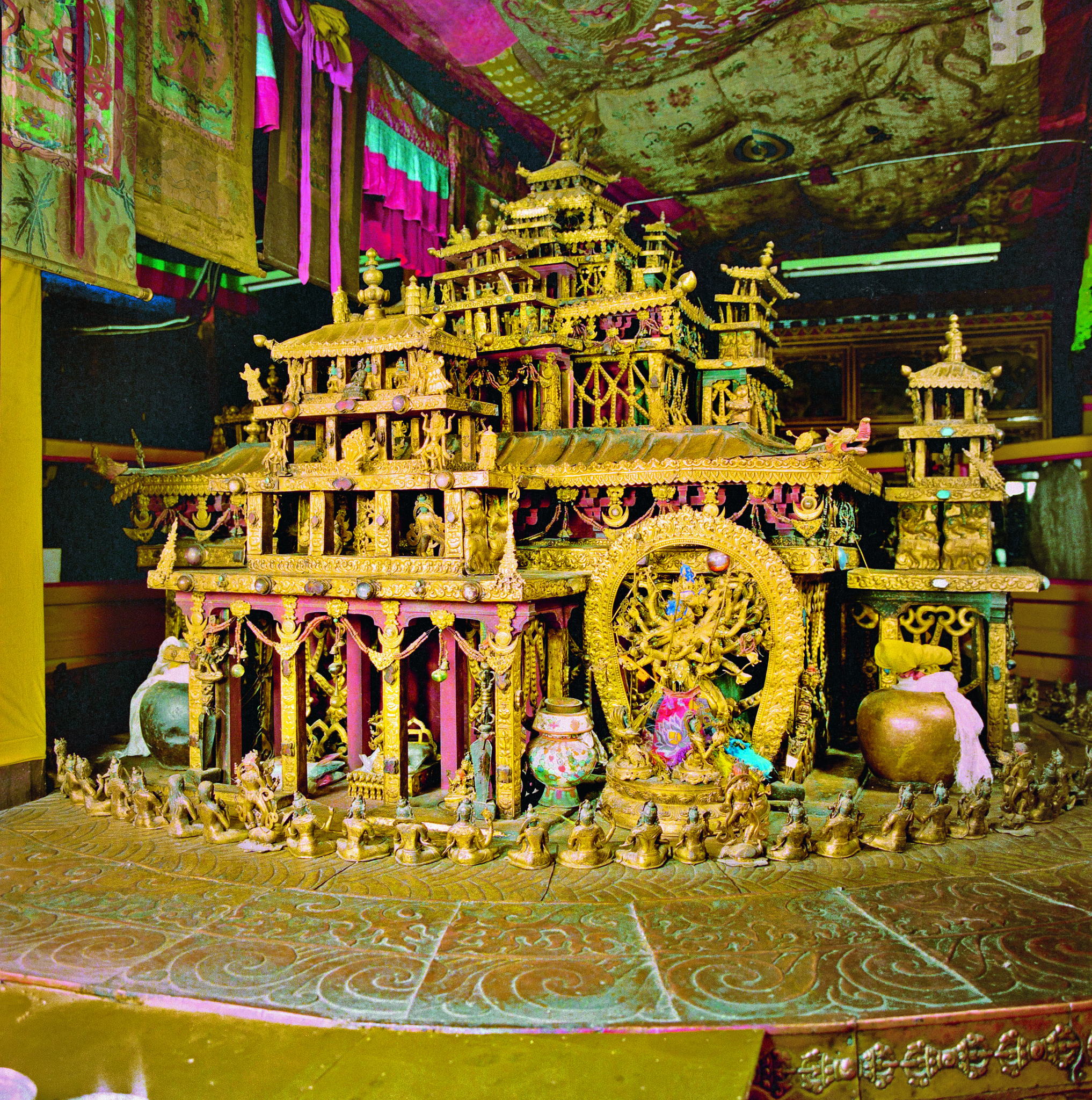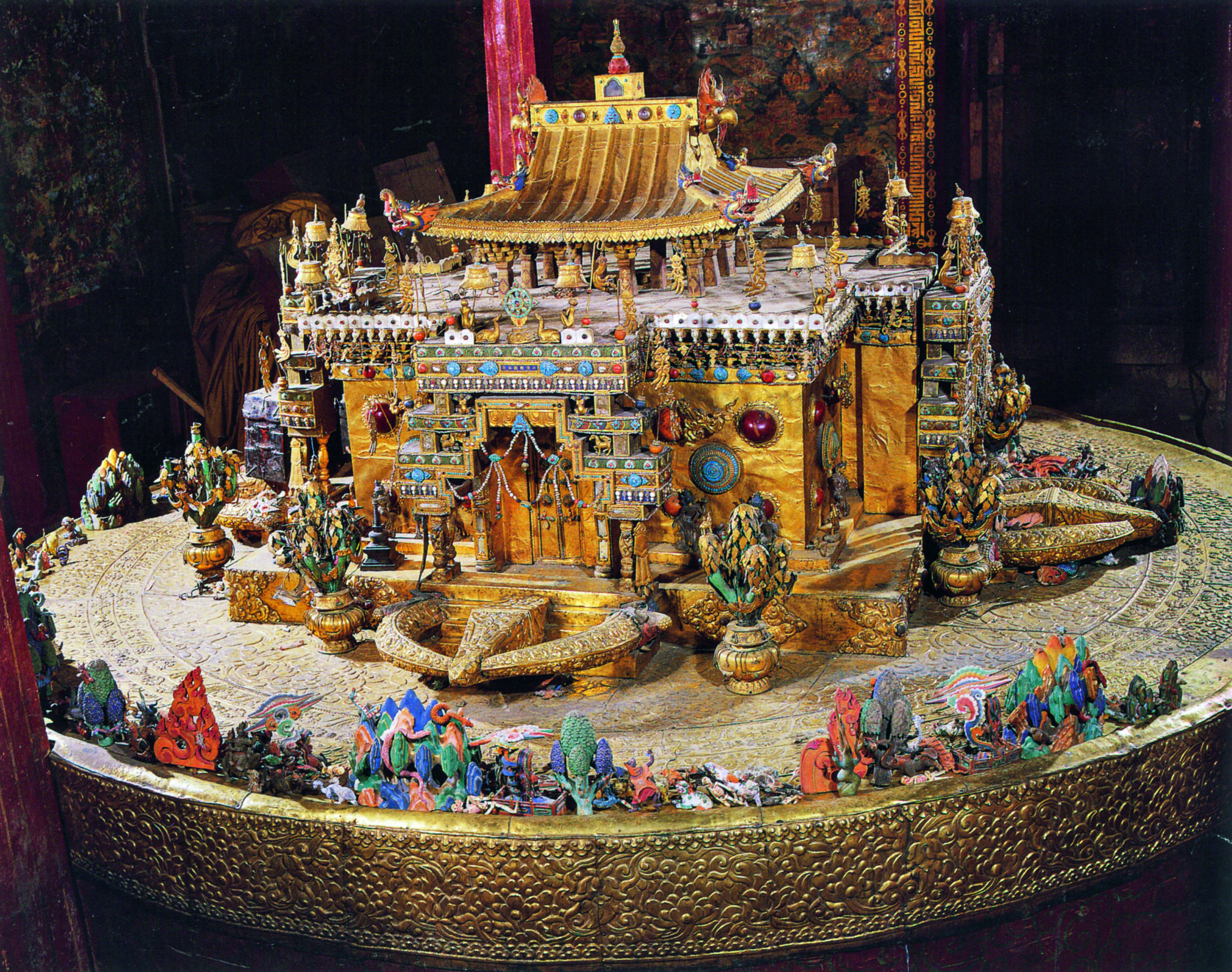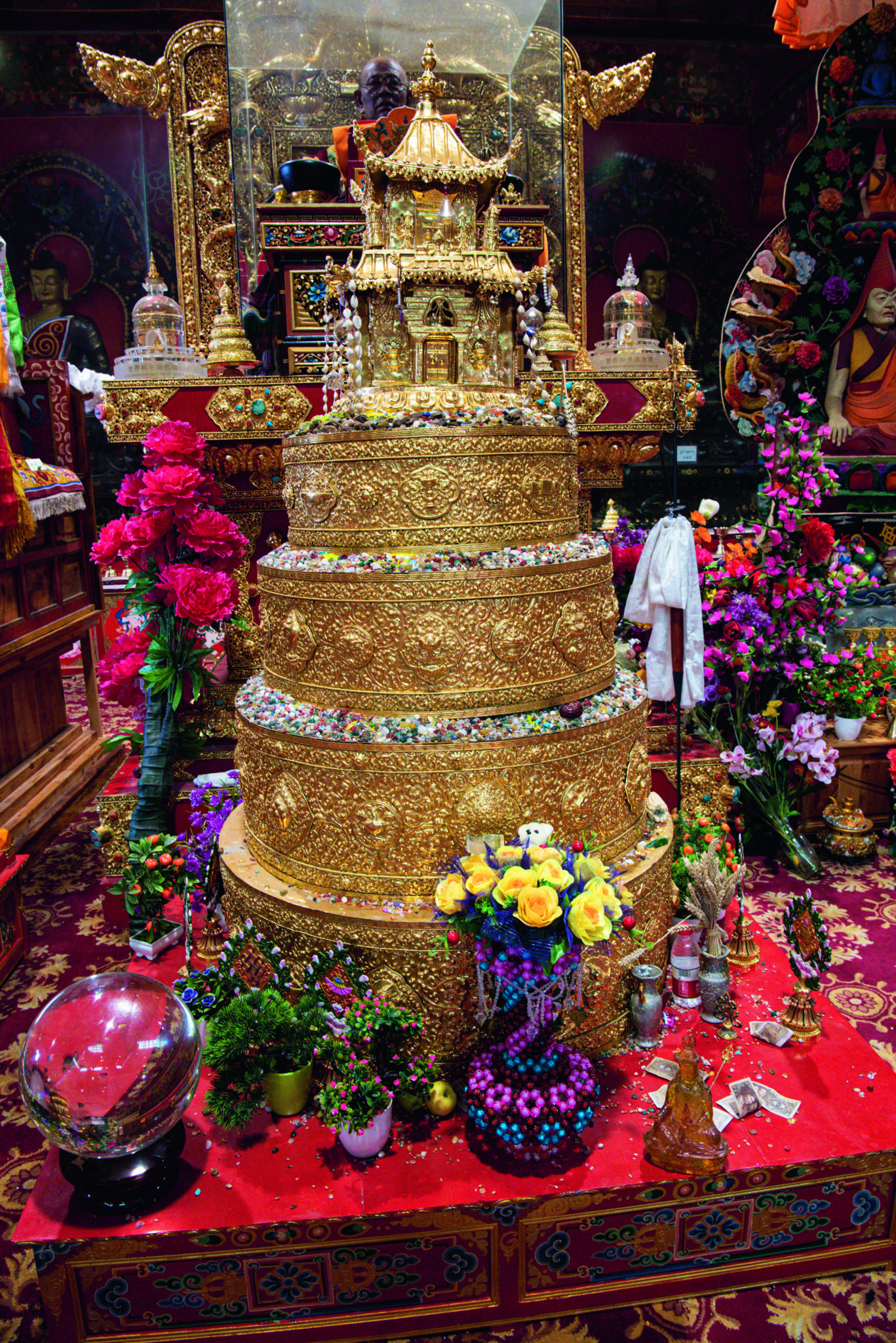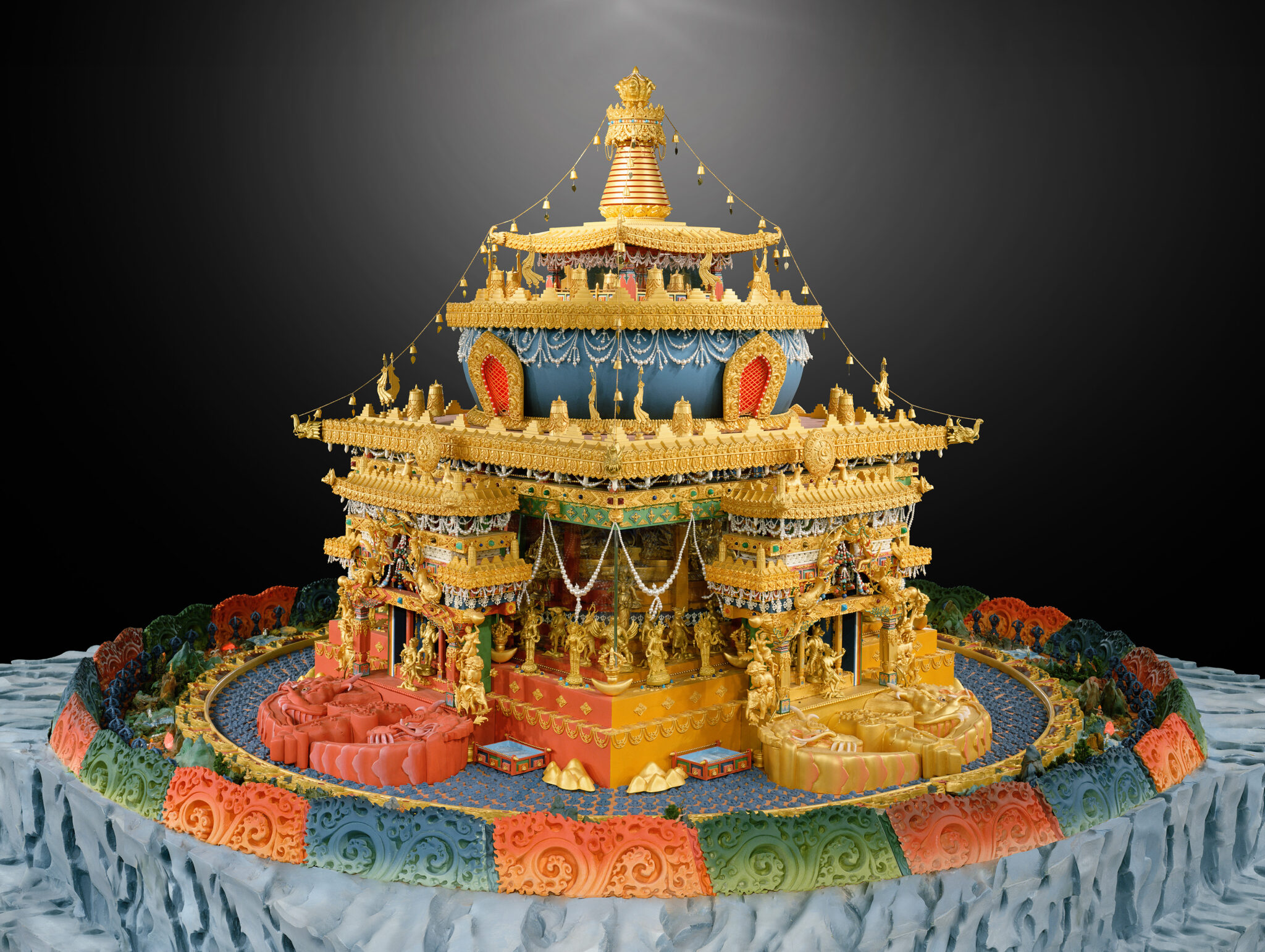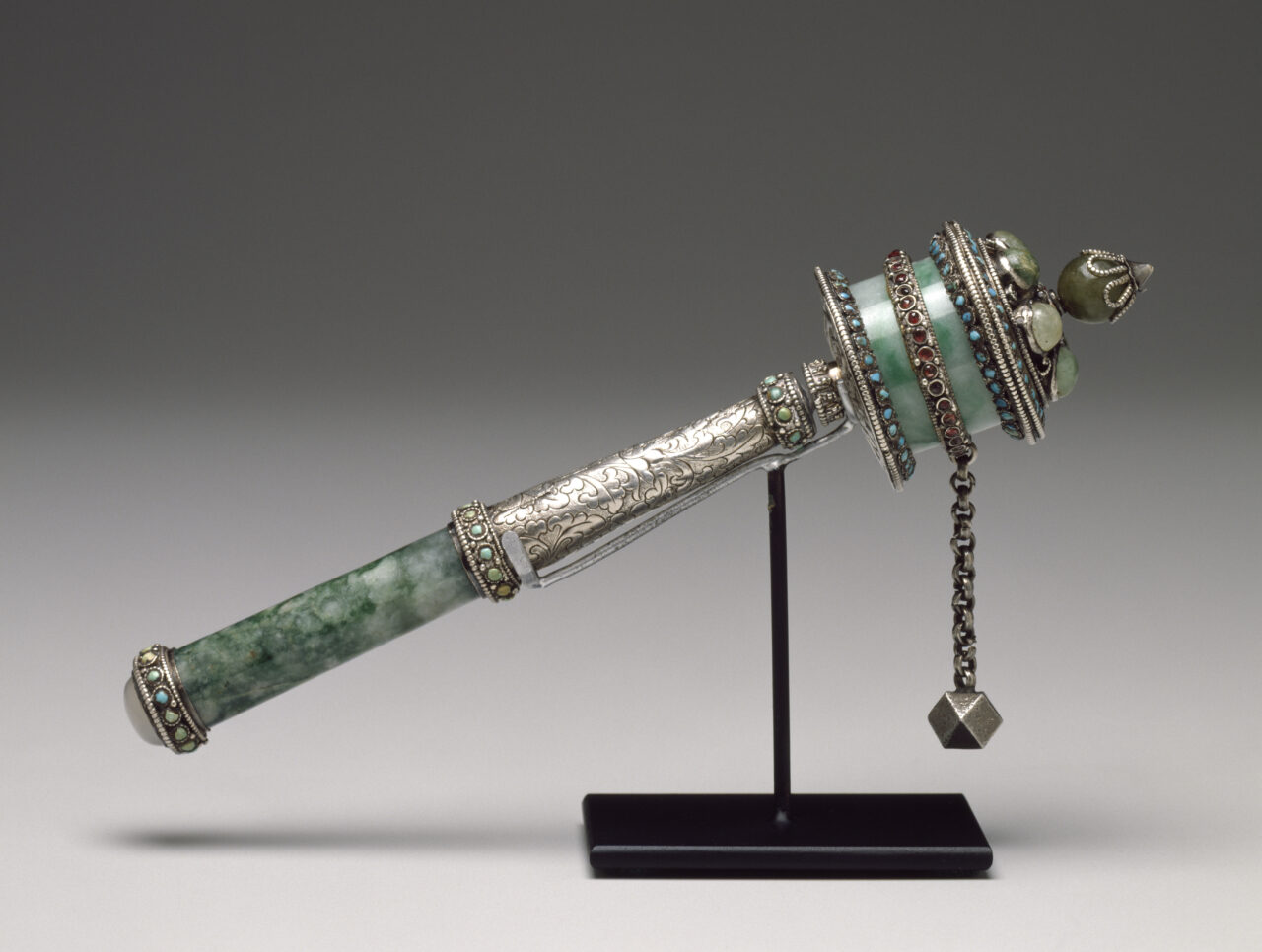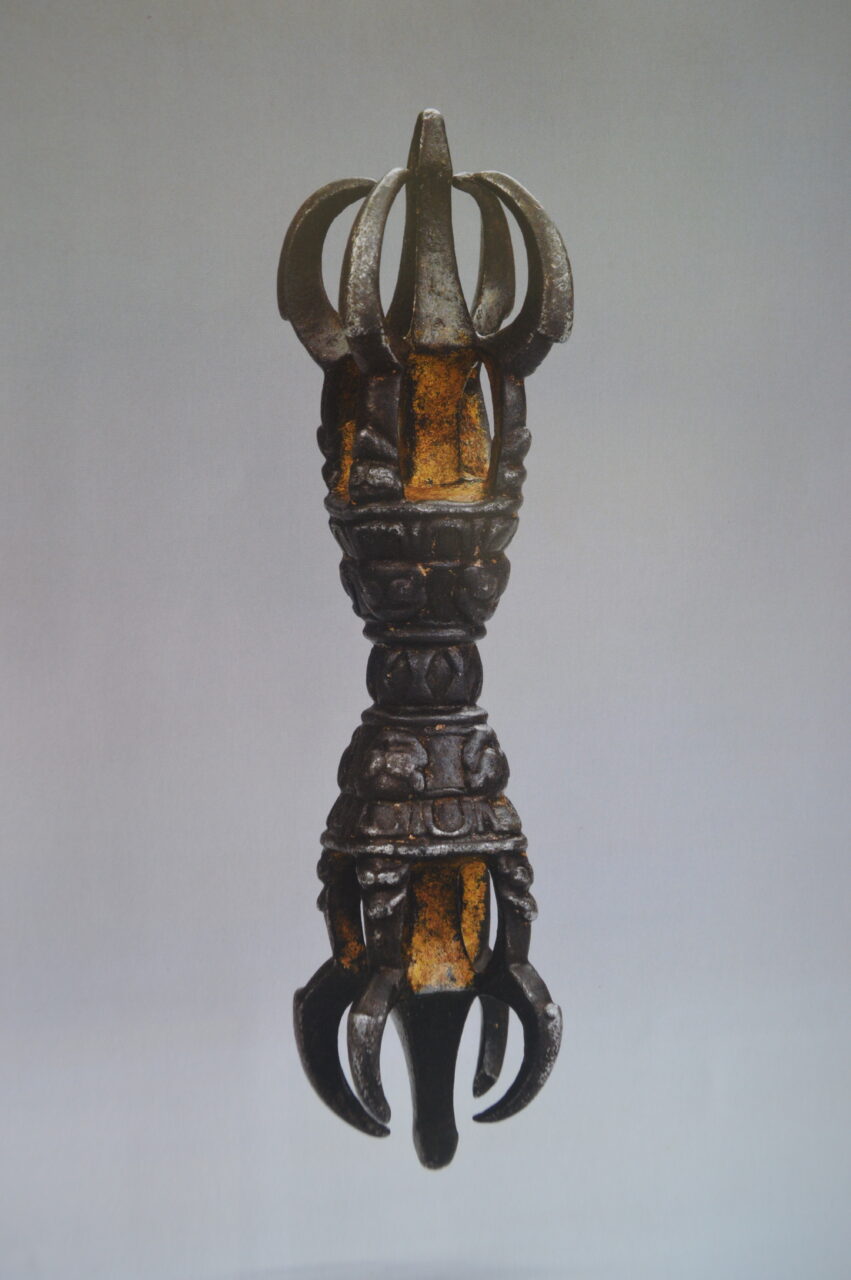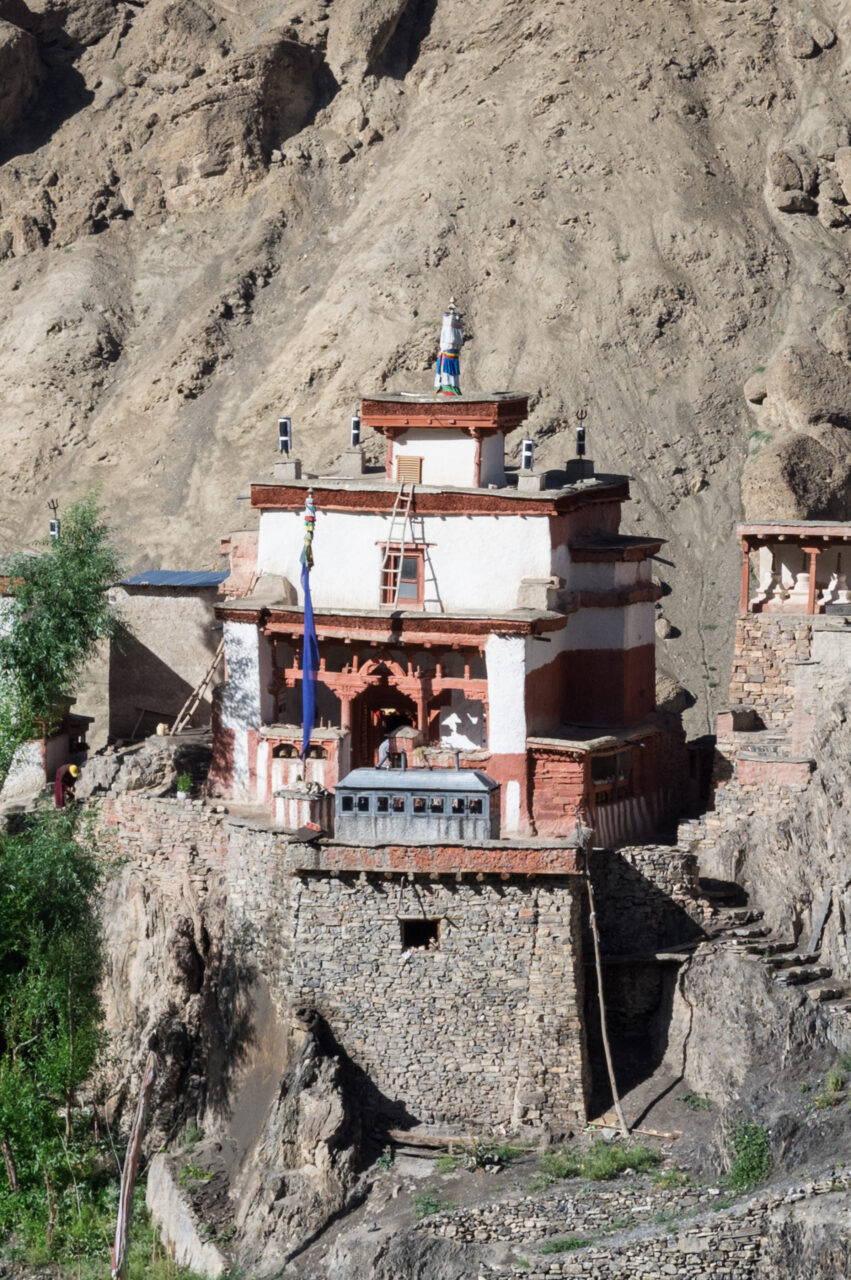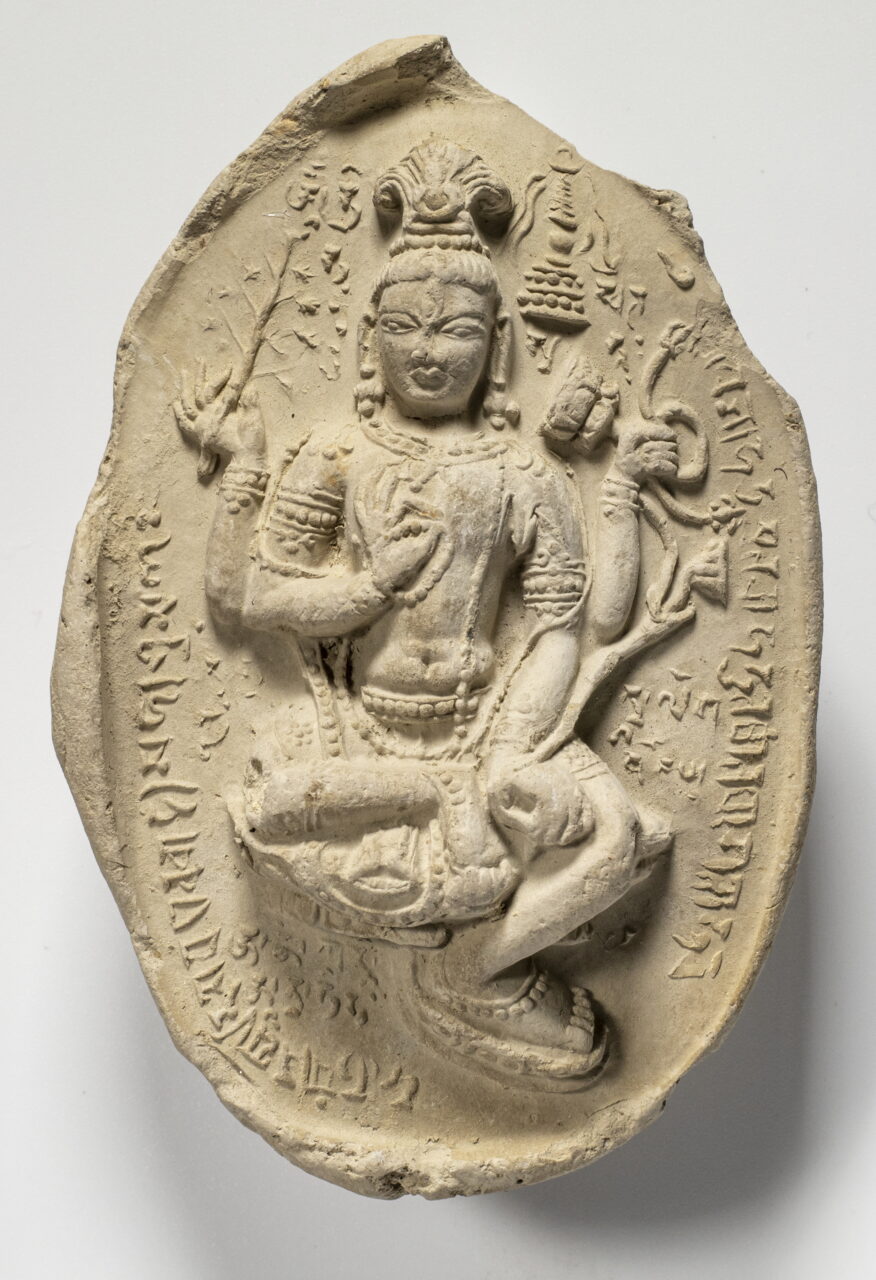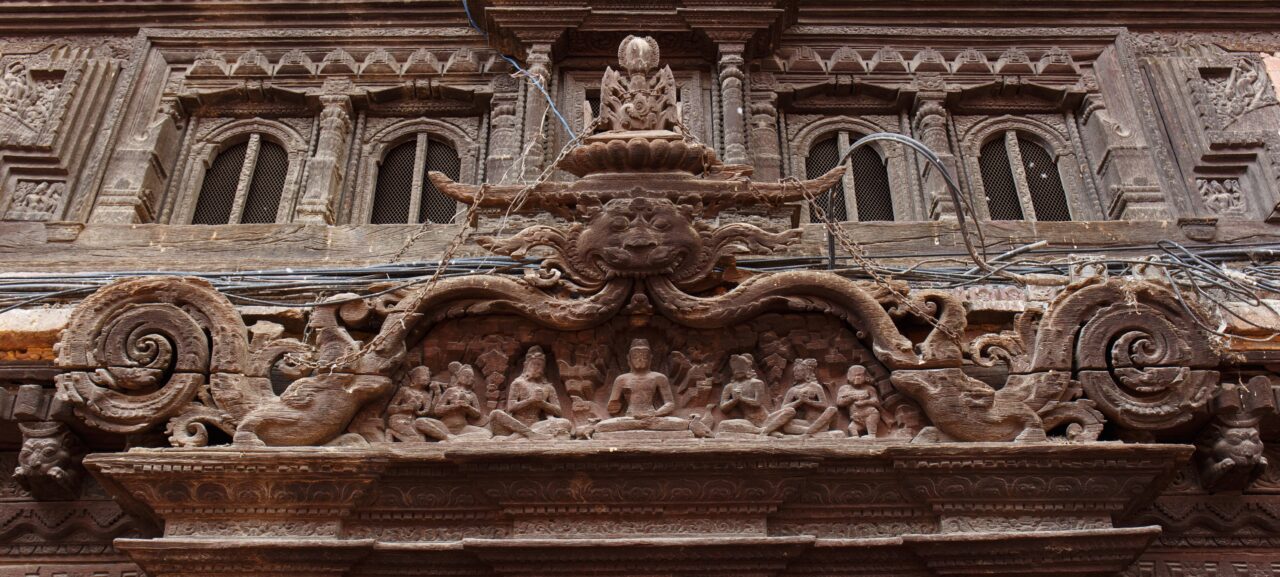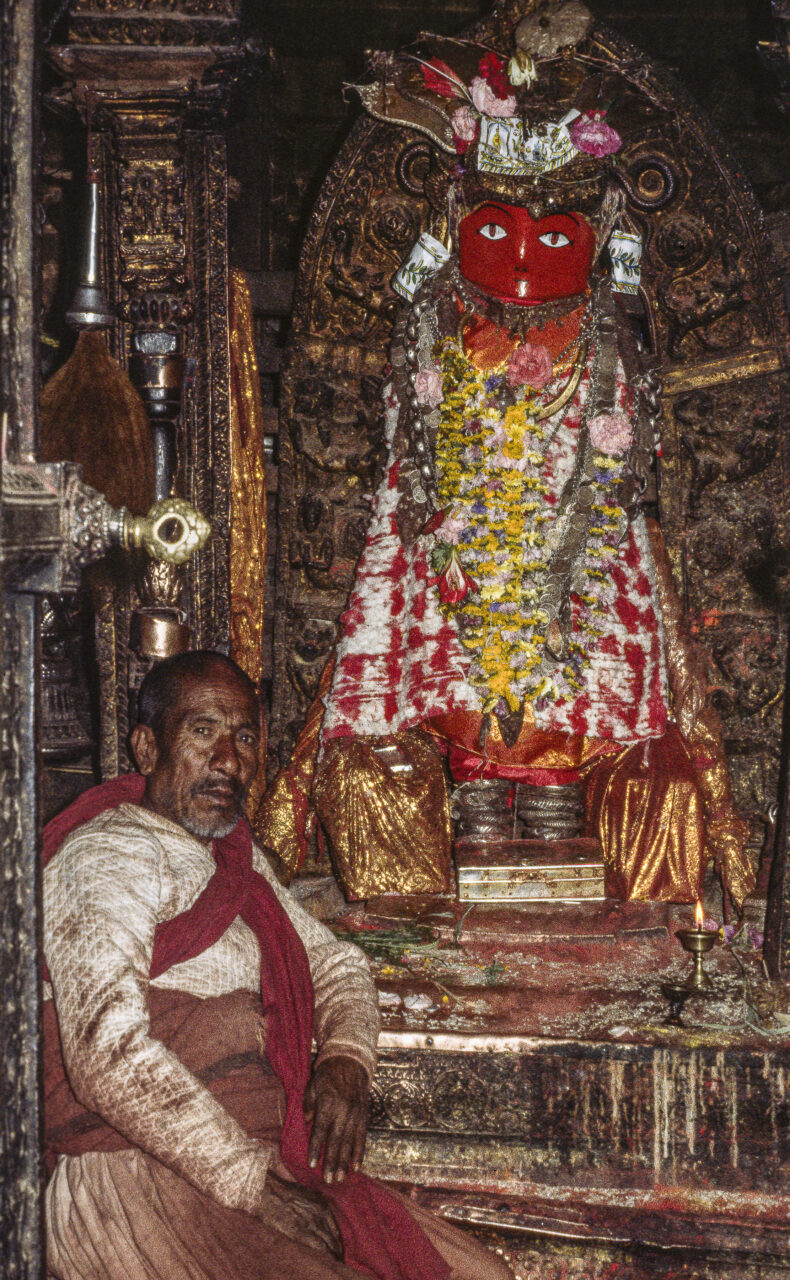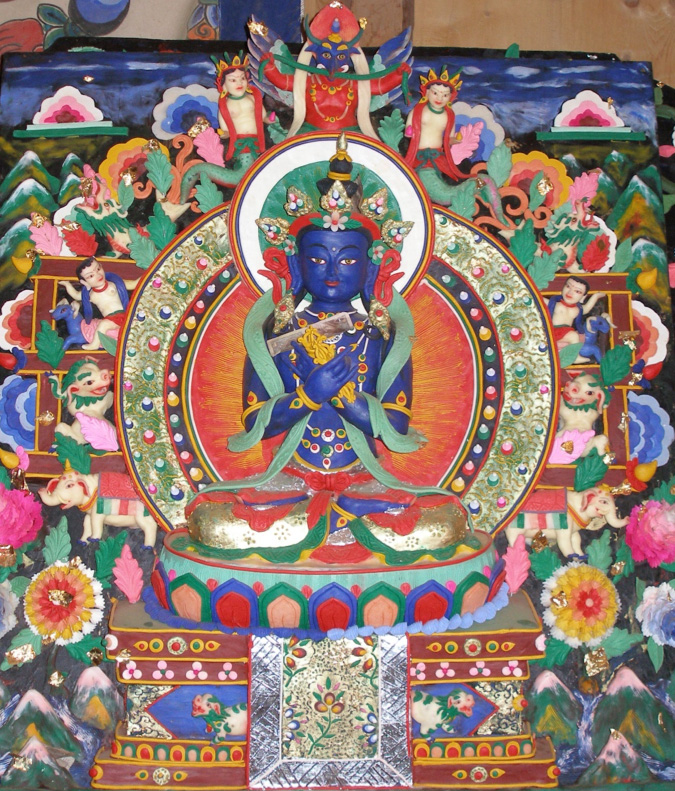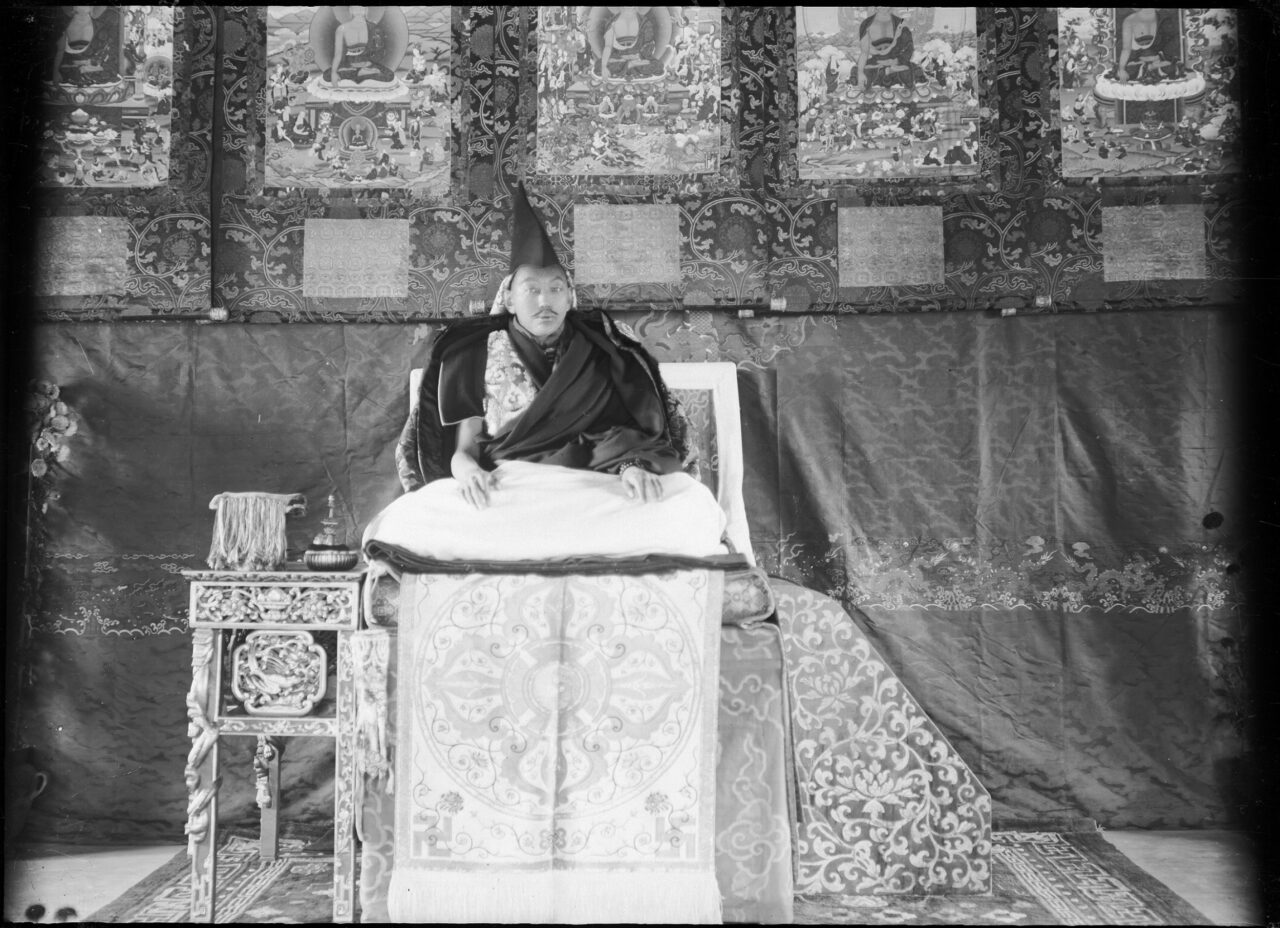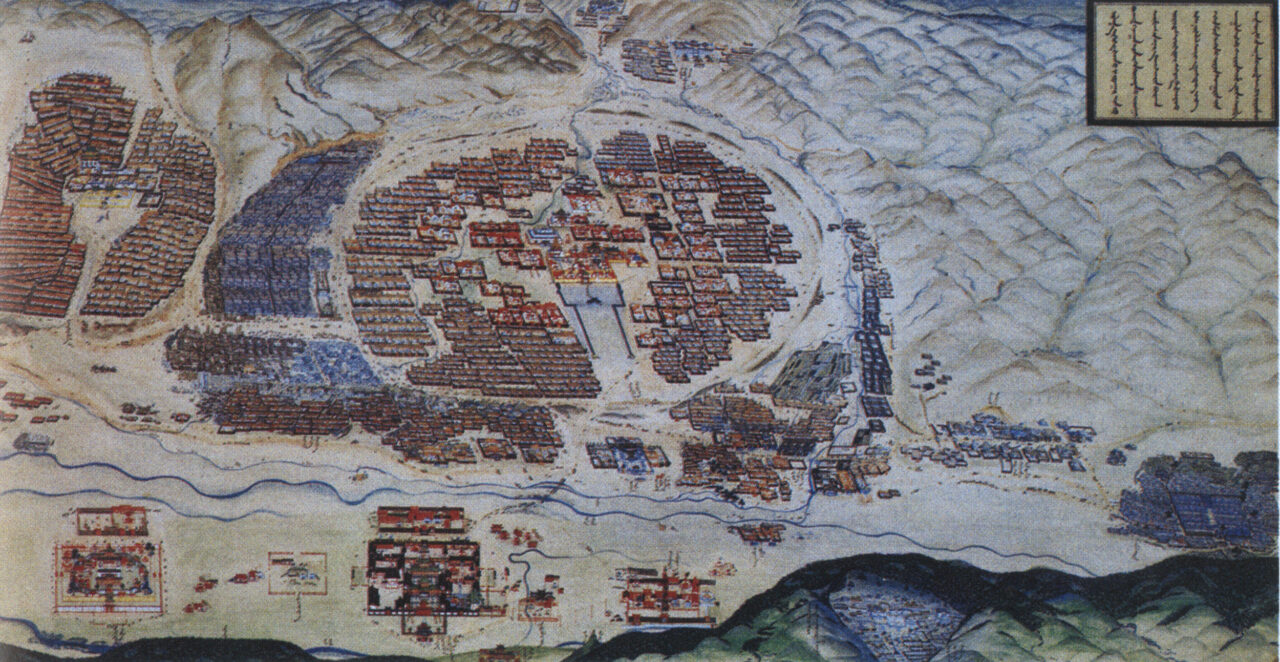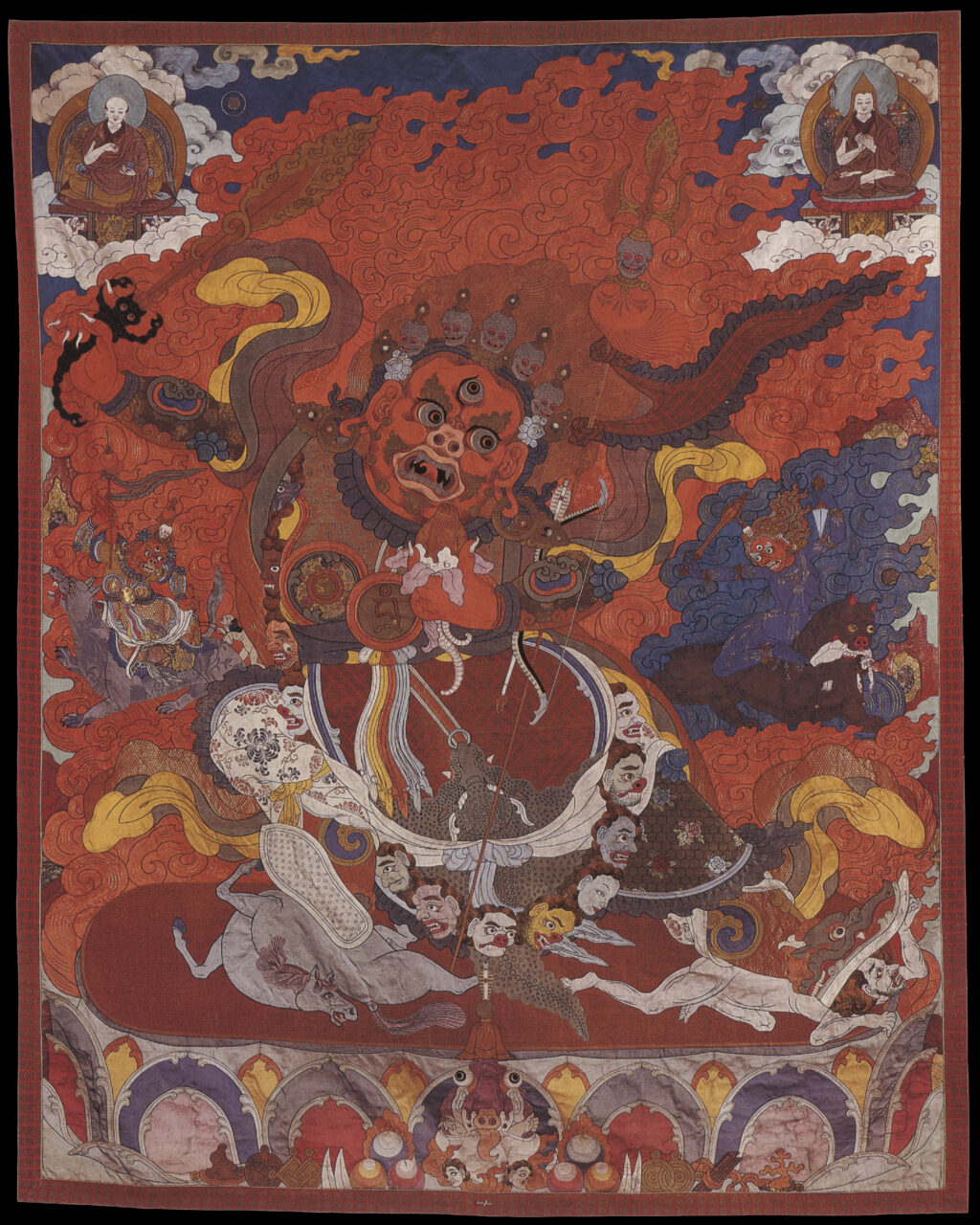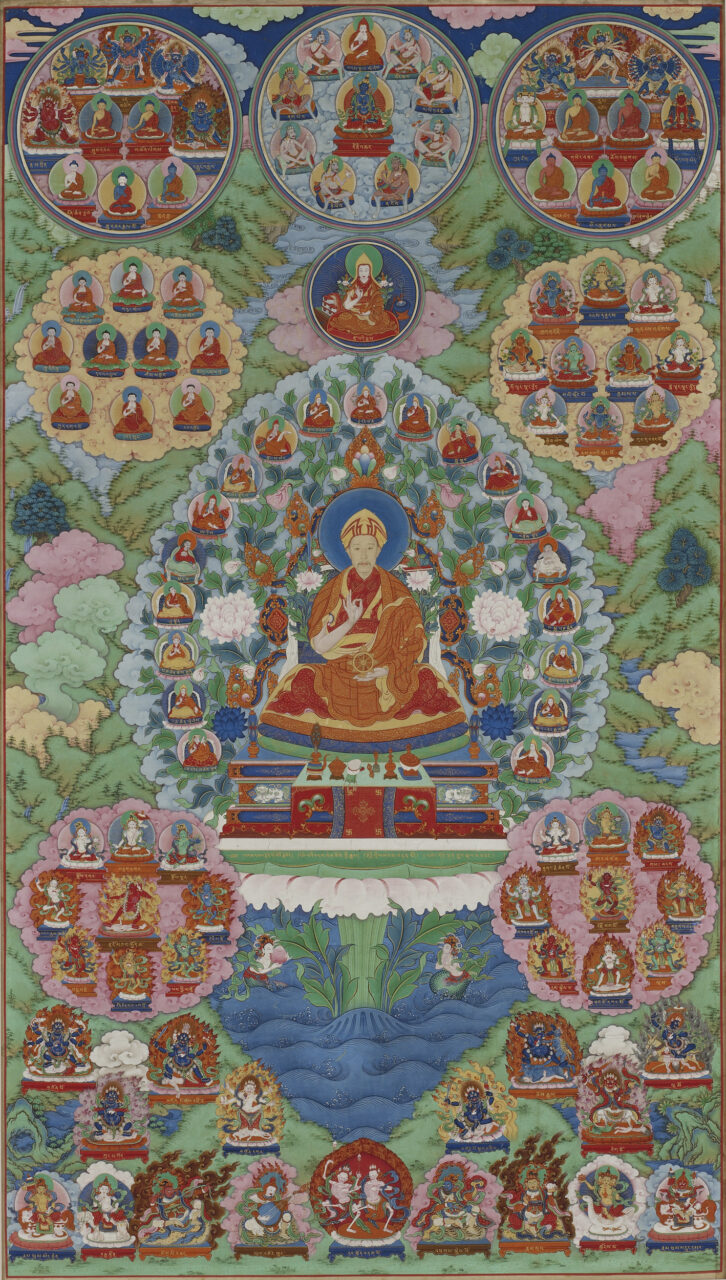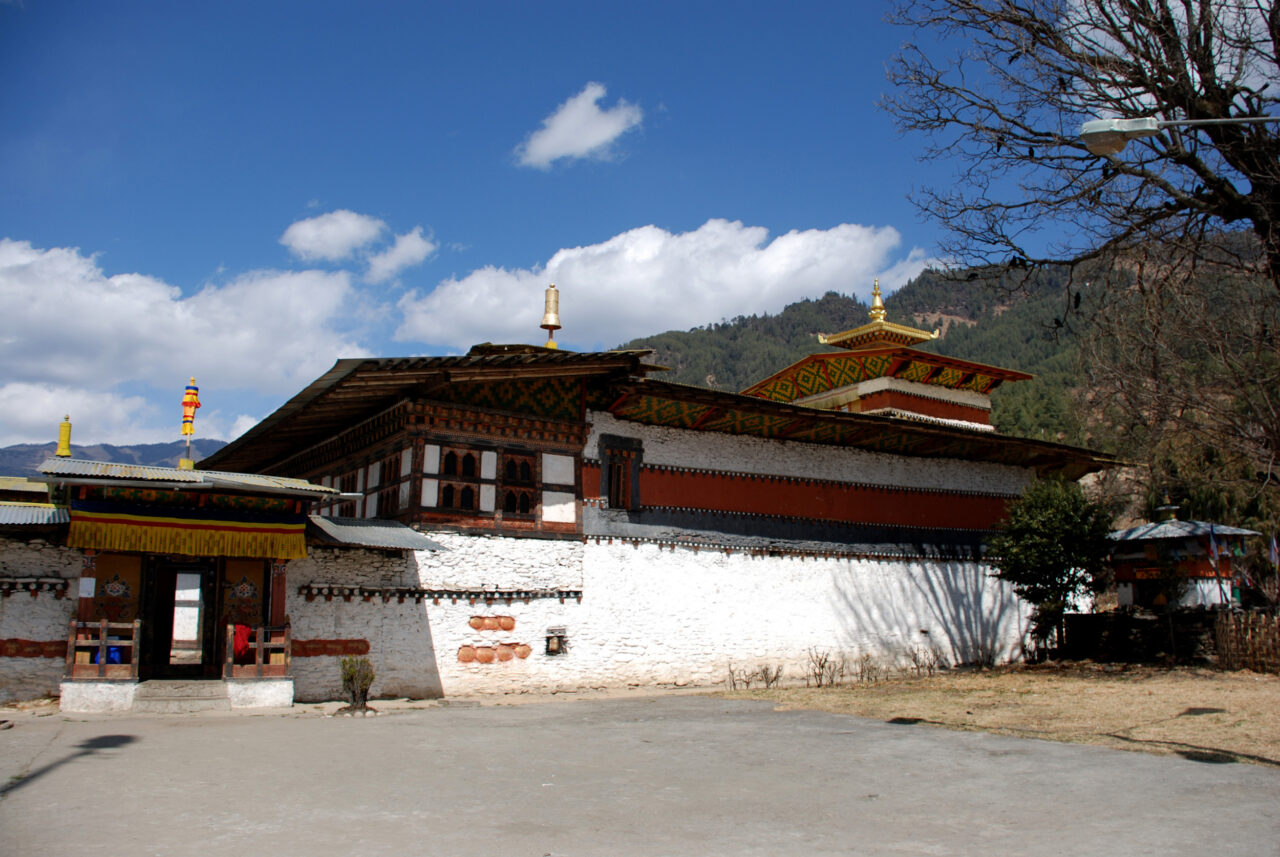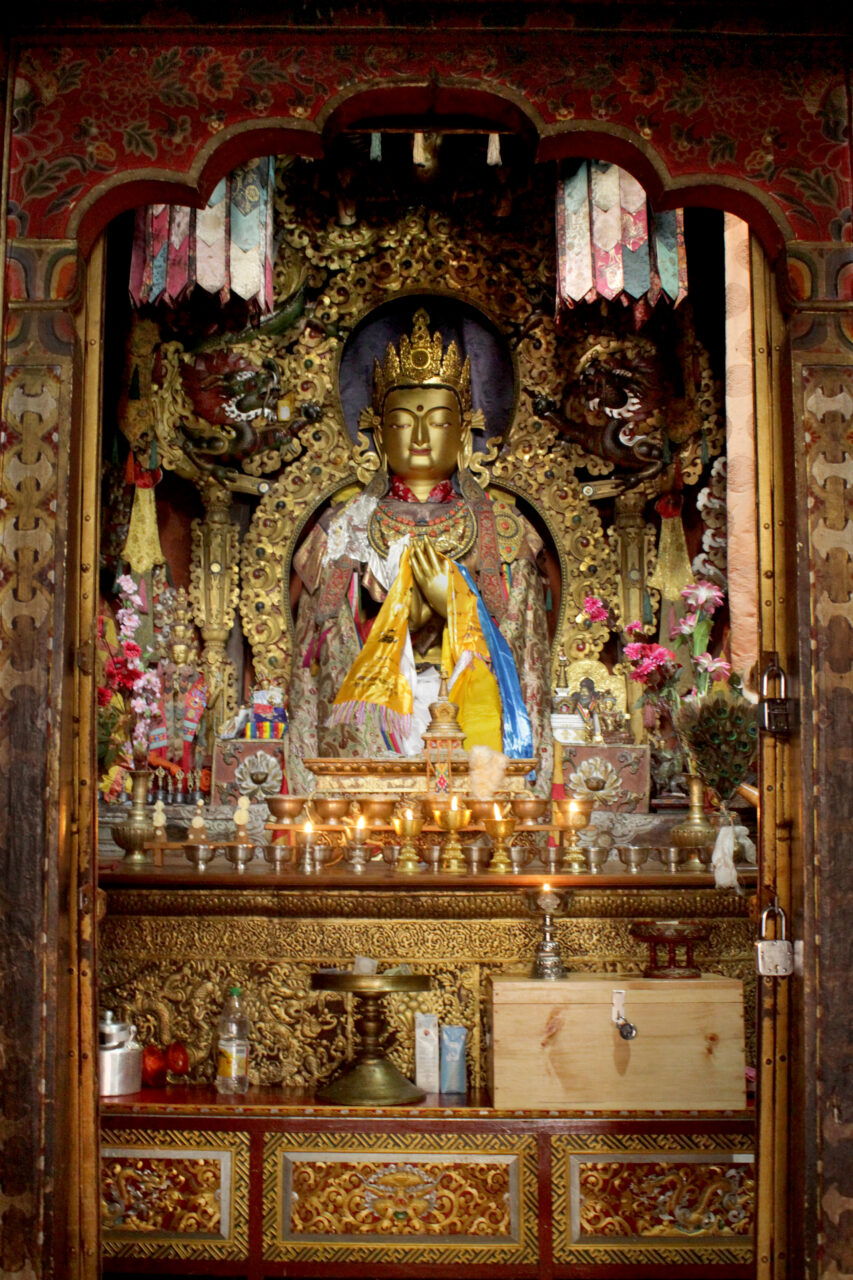In most Asian religious traditions, when an image of a deity is made, it must be made sacred (“consecrated”) by inviting the deity to inhabit it. A variety of rituals can be involved in this, including dotting the image’s eyes, visualizing the descent of the deity into the image, writing mantras on the back of a thangka, or placing sacred texts and mantras inside of a statue.
In Hindu, Buddhist, and Jain cosmologies Mount Meru is a mountain at the center of the world, the peaks of which contain heavens and divine realms. It is surrounded by many lakes, rings of mountains, and further out, the great ocean and four continents. Humans live on a southern continent called Jampudvipa. Buddhists interpret Jampudvipa corresponding to India, and Mount Meru is roughly equivalent to the Himalayas. Many Buddhists and Hindus identify Meru with Mount Kailash, a peak in western Tibet, as the focus of pilgrimage.
Historically, Tibetan Buddhism refers to those Buddhist traditions that use Tibetan as a ritual language. It is practiced in Tibet, Mongolia, Bhutan, Ladakh, and among certain groups in Nepal, China, and Russia and has an international following. Buddhism was introduced to Tibet in two waves, first when rulers of the Tibetan Empire (seventh to ninth centuries CE), embraced the Buddhist faith as their state religion, and during the second diffusion (late tenth through thirteenth centuries), when monks and translators brought in Buddhist culture from India, Nepal, and Central Asia. As a result, the entire Buddhist canon was translated into Tibetan, and monasteries grew to become centers of intellectual, cultural, and political power. From the end of the twelfth century, Tibetans were exporting their own Buddhist traditions abroad. Tibetan Buddhism integrates Mahayana teachings with the esoteric practices of Vajrayana, and includes those developed in Tibet, such as Dzogchen, as well as indigenous Tibetan religious practices focused on local gods. Historically major traditions of Tibetan Buddhism are Nyingma, Kagyu, Sakya, and Geluk.
In the Vedas, vajras are the indestructibly hard thunderbolts that Indra hurls at his enemies. Over time, the vajra became the name for a type of ritual weapon, with a handle at the center and a five-pronged point at each end. Vajras are a central image in and symbol of tantric forms of Buddhism, which are often called “Vajrayana” or the “Vajra Vehicle.” Vajrayana ritualists use vajras (representing active compassion or method) often paired with a bell (representing wisdom) in practices of deity yoga. The Tibetan word for a vajra is “dorje,” meaning “Lord among stones.”
Visualization is a process of using one’s imagination to transform reality. A practitioner imagines in their mind’s eye the deity with the associated enlightened qualities they wish to embody themselves. When focused on a specific deity, visualization and related ritual practices are called deity yoga. Visualization is a fundamental element of such practices described in texts known tantras, which define a system of meditation and ritual meant to transform the mind and body.
In Vajrayana Buddhism, a yidam is a deity or buddha with whom the meditator connects as part of a deity yoga practice. Practitioners take tantric vows (Tib. damtsik) as part of abhisheka initiations, followed by oral instruction from a master, which permit them to perform meditations in which they visualize themselves becoming the deity described in a particular tantra, and gaining that deity’s enlightened or wrathful powers.
In Vajrayana Buddhism or Bon, a mandala refers to a cosmic abode of a deity, usually depicted as a diagram of a circle with an inscribed square that represents the deity enthroned in their palace, surrounded by members of their retinue. Mandalas can be painted, three-dimensional models, architectural structures, such as temples or stupas, or composed as arrangements of images within a temple. The instructions for creating and visualizing mandalas are usually found in ritual texts, such as tantras and sadhanas. Mandalas can be used in initiation ceremonies, visualized by a practitioner as part of deity yoga, consecrated and used to represent the divine presence within ritual space, offered to the deities as representations of the entire universe. A similar concept in Hinduism is a yantra.




